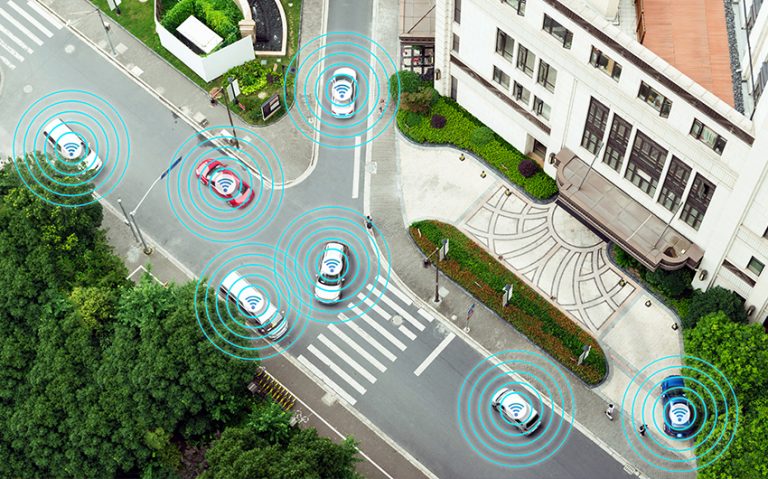VR & AR still miles from being properly ready.
- Facebook has launched a wireless VR headset that appears to be very similar to Oculus Gear which addresses a gap in its portfolio but does nothing to alleviate the issues that keep VR a niche segment.
- At the same time Apple has admitted that real AR is years away, explaining its (and almost everyone else’s) focus on offering AR using the camera and screen of a smartphone.
Virtual Reality
- Facebook has launched the Oculus Go which is a self-contained VR unit that sports better resolution (2560×1440) than the original Rift and a “fast-switch” LCD display which I assume aims to increase the refresh rate to improve image quality.
- Facebook did not announce which processor is being used but I am almost certain (see below) that it is a smartphone processor with some commentators speculating that it is the Snapdragon 821.
- The price is right at $199 and the fact that the Go has binary compatibility with the Gear implies that this device probably has the guts of a smartphone.
- This makes sense as the Android supply chain has huge volumes which would have been very useful in designing the device to have a reasonable specification and yet meet the price point of $199.
- It also means that there is already a range of apps and services available which removes the problem of there being no content available for the device at launch.
- While the Oculus Go plugs an important gap in its portfolio, it does not do much to solve the real issues that plague VR which remain:
- Price: Many of the devices cost several hundreds of dollars and also require a PC to run, further increasing the cost.
- To be fair, the Oculus Go does address this issue but it does so at the expense of raw performance.
- Clunky: VR and AR units are still large, clunky and uncomfortable to wear.
- In many cases they also make the user feel foolish when wearing one.
- Comfort and security: VR cuts the user off from almost all sensory inputs from his immediate environment, severely limiting the situations in which the user would feel comfortable using one.
- Many units also cause feelings of nausea due to an imperfect replication of the real world compared to what the brain is expecting.
- Cable: Many units require an HDMI cable which prevents the user from moving and also increases the risk of a fall should the user trip over the cable.
- Again, the Go addresses this issue but does so at the expense of performance.
- To bring VR to the mainstream, I think that these issues need to be solved with no compromises being made with regard to the user experience.
- Of this there is still little sign leaving me very cautious on the outlook for the immediate term.
Augmented Reality
- The requirements I see for AR to really come of age remain far more challenging and include:
- First: a head unit that is no more intrusive to wear than a regular pair of spectacles (also applies to VR).
- Second: a full field view of the virtual world as it is superimposed upon the real world.
- This is proving to be so difficult that all the solutions available today are letterboxed (limited field of view) with no real time-line as for when this problem will be solved.
- I have doubts that Magic Leap will be able to solve it an time soon.
- Third: there will need to a vibrant ecosystem of developers to ensure that the experience offered is both broad and deep.
- Developers will also be needed to ensure that the experience is easy to use and fun and to push the boundaries of what the device can be used for.
- AR is even further away from meeting these ideals in my opinion but it is finding an initial lease of life in the enterprise.
- This is because when users are paid to have the experience, tolerance of clunky head units and a bad user experience is much higher.
- When this is combined with a good improvement in productivity there is enough benefit to see some traction.
- However in consumer, the challenges remain enormous which is why the consumer ecosystems are pushing AR on smartphones as a stop gap.
- I think that the experience offered there is pretty weak meaning that investments here are really about being prepared for when the above issues can be fixed rather than driving uptake of a new use case for smartphones.
Take Home Message
- The net result is that I see nothing on the horizon that is going to change the current situation in either VR or AR.
- Hence, I think that they will remain ancillary to the propositions offered by the big ecosystems and incapable of influencing a user’s purchase decision on where to live his digital life.
- The result will be relatively low volumes and disappointment compared to the hype that regularly surrounds product demonstrations.
- I continue to believe that investors in this space need to have a very long-time horizon.









Blog Comments
Ankit
October 15, 2017 at 11:38 am
Dear Richard,
Please add me to your distribution list. Will appreciate.
Many thanks.
windsorr
October 16, 2017 at 11:10 am
sure have added you